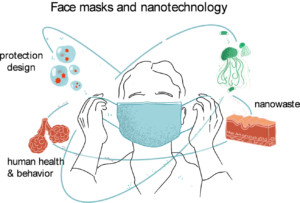Face masks and nanotechnology
ISC researcher V. Palmieri coauthored an article on NanoToday explaining the role of nanotechnologies in improving the performance of facial masks and warning on possible future consequences caused by a poorly regulated use of nanotechnology in textiles.
Coronavirus Disease 2019 (COVID-19) is one of the biggest challenges of the 21st century. While researchers are working on vaccine development and elucidating the mechanism of action and evolution of the harmful SARS-CoV-2, the current most important public health measure, second only to social distancing, is the obligatory wearing of facial protection. The Centers for Disease Control and Prevention recommended in April 2020 that the public wear face coverings in areas with high rates of transmission based on epidemiological evidence on the strong relationship between mask wearing and pandemic control. This protection against SARS-CoV-2 and other airborne pathogens, boost the design and production of innovative solutions by industry stakeholders. Nanoparticles, nanofibers, and other pioneering technologies based on nanomaterials have been introduced in mask production chains to improve performance and confer antiviral properties. During an emergency like COVID-19, these products directly available to the public should be carefully analyzed in terms of efficacy and possible long-term effects on the wearers’ skin and lungs as well as on the environment. This opinion paper provides a wealth of information on the role of nanotechnologies in improving the performance of facial masks and on possible future consequences caused by a poorly regulated use of nanotechnology in textiles.


